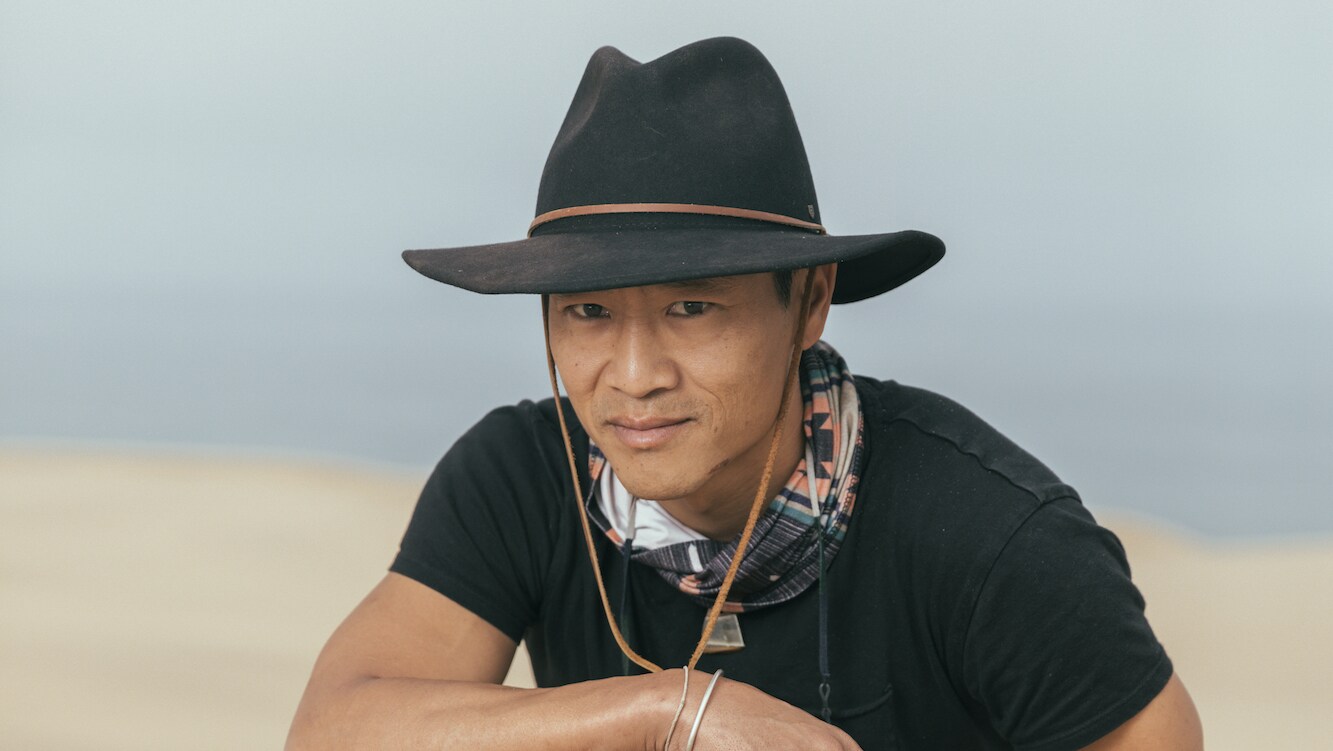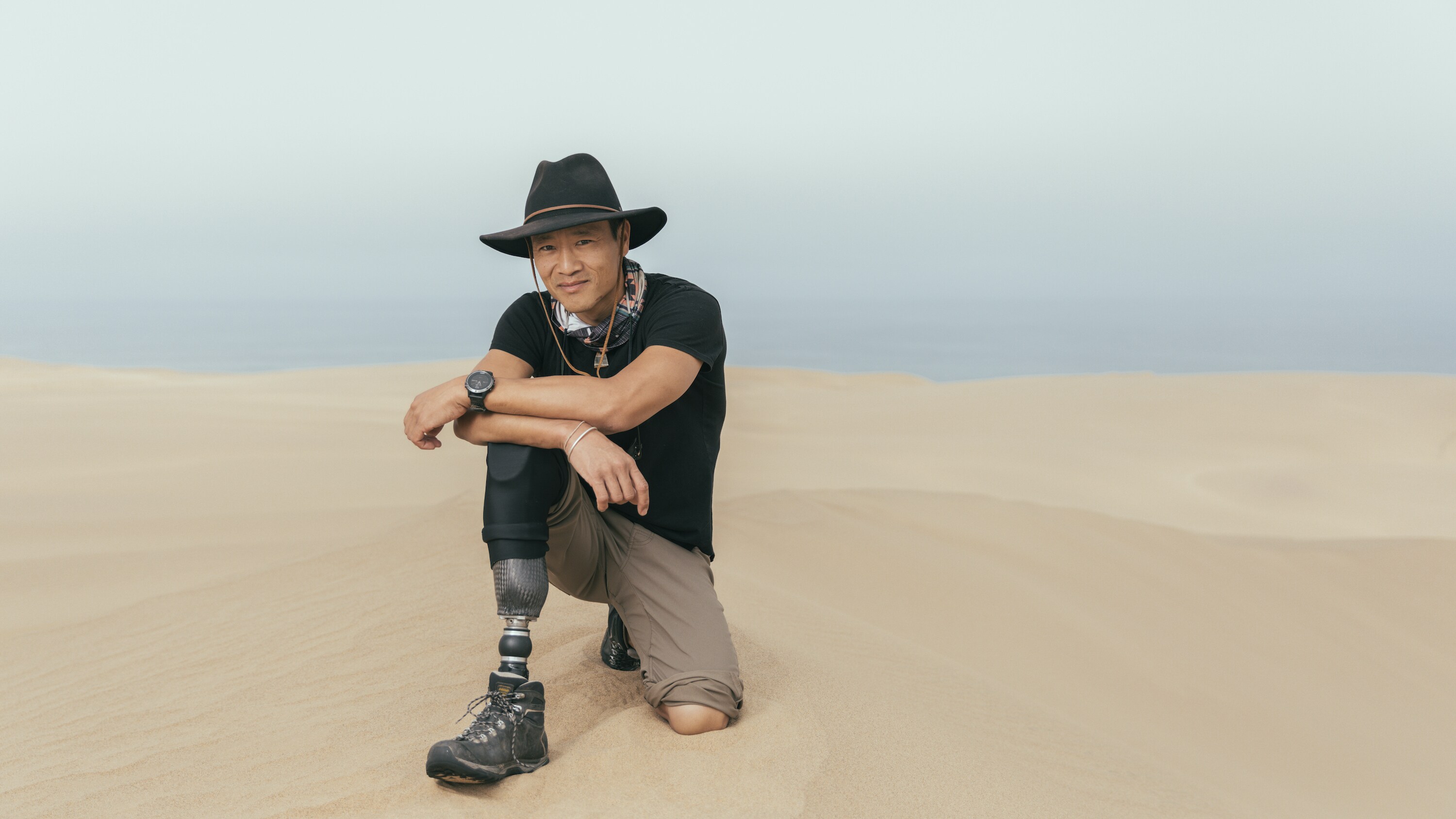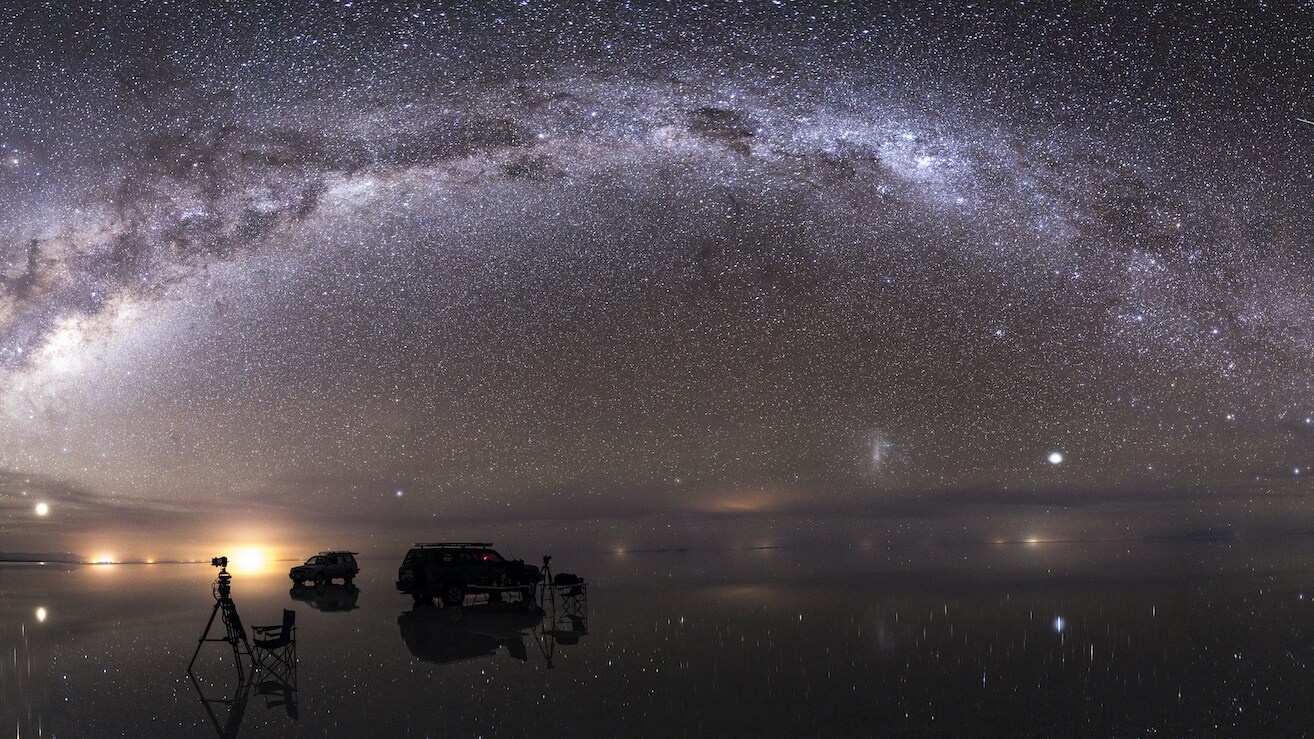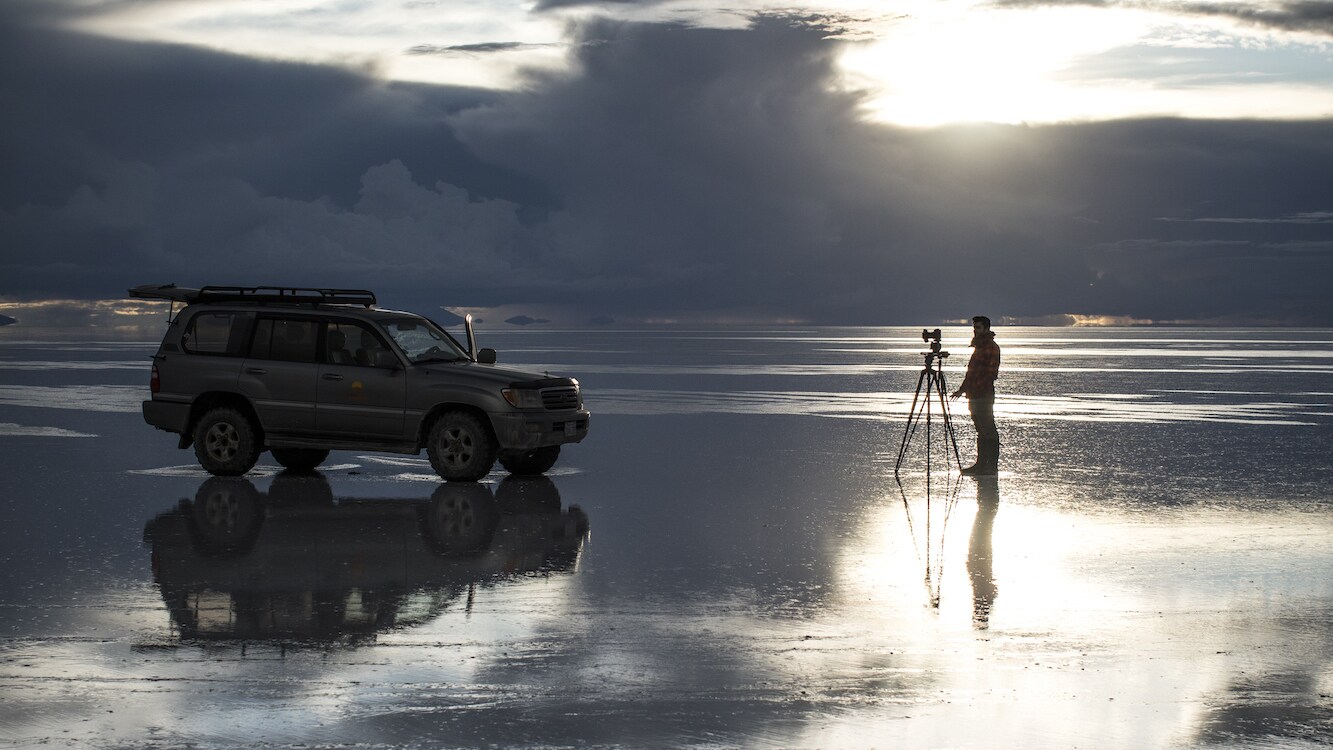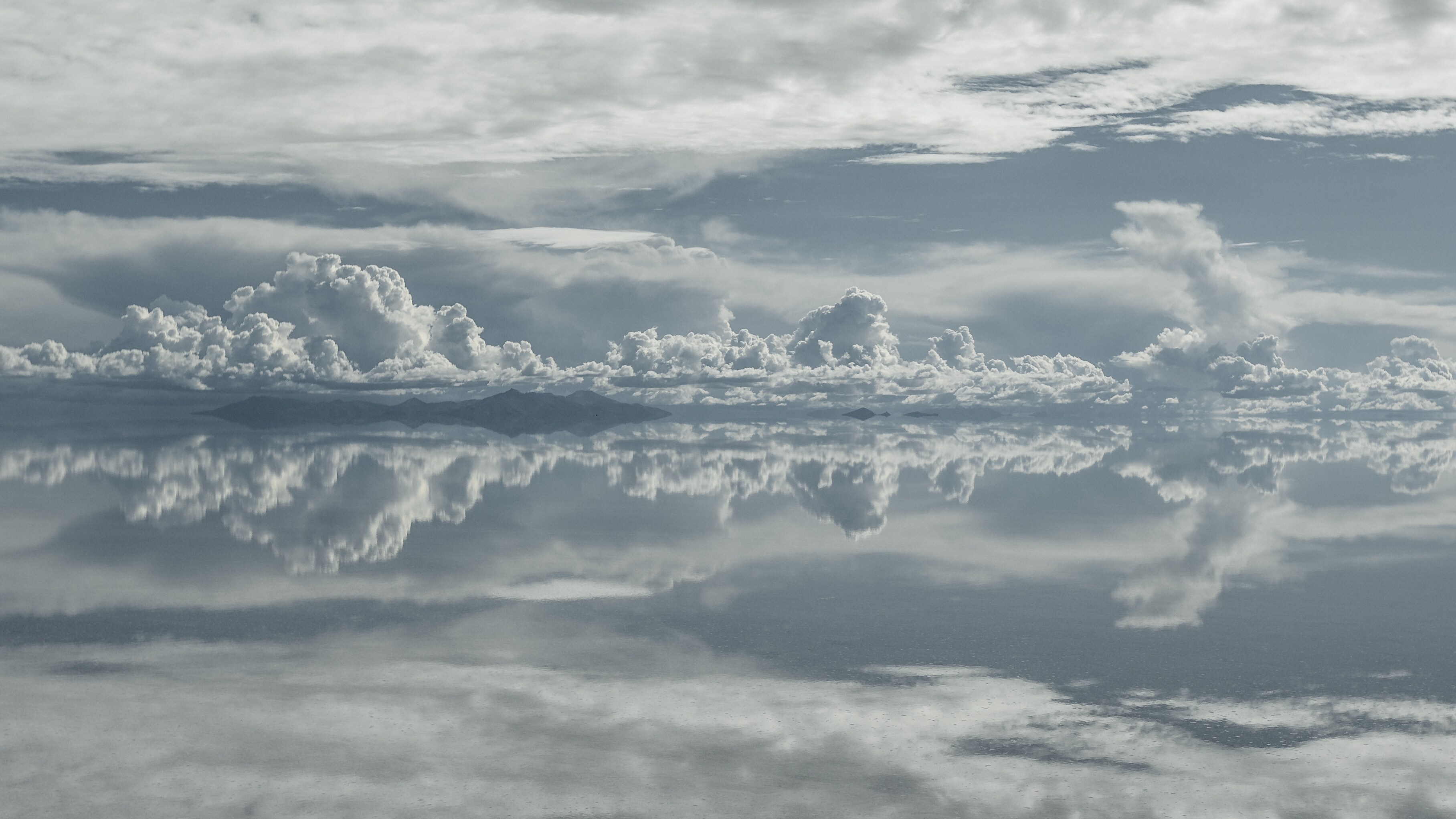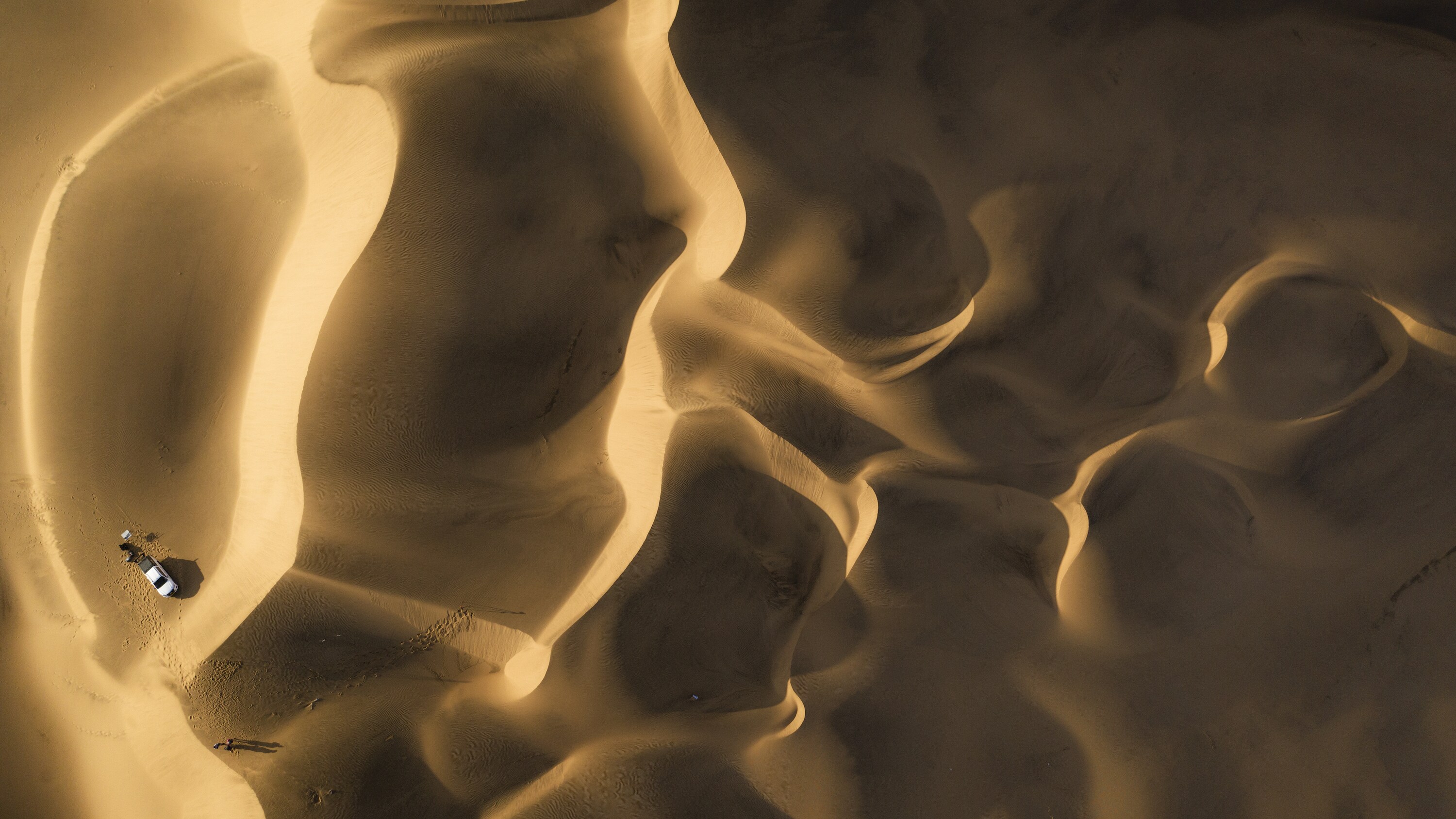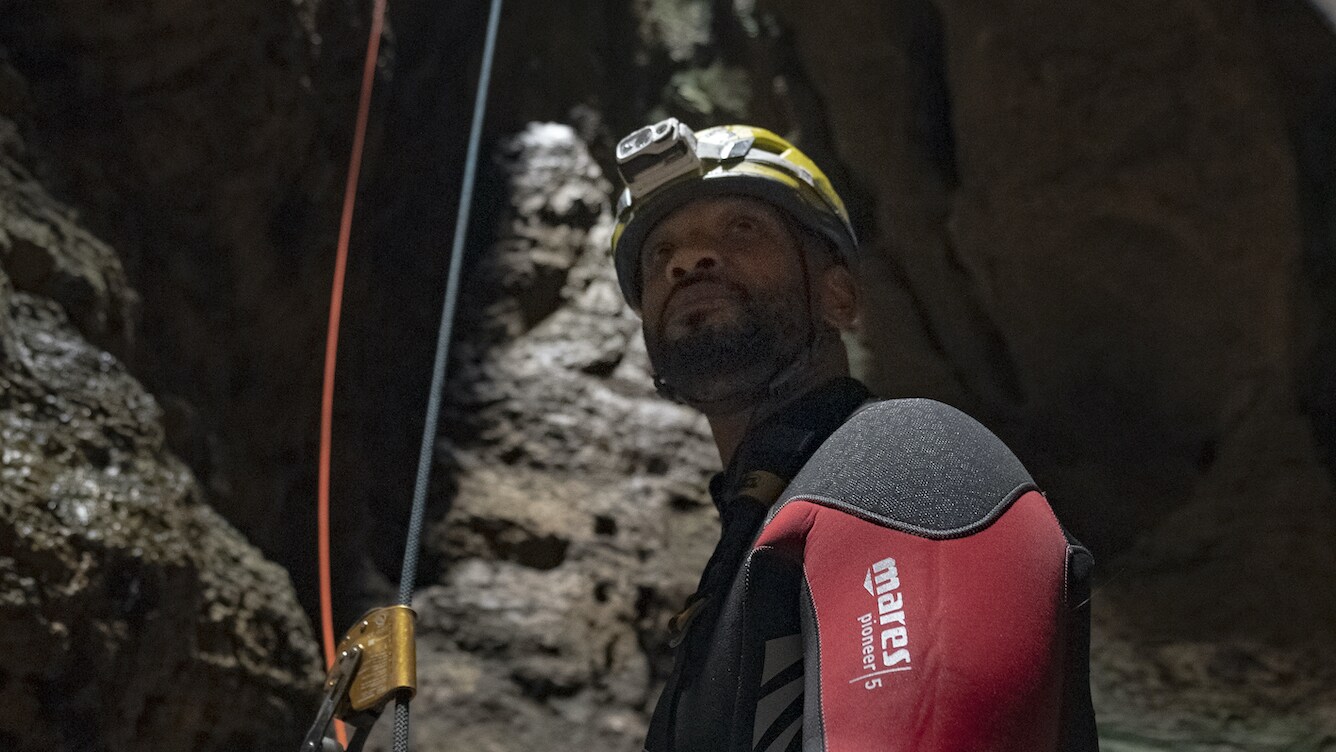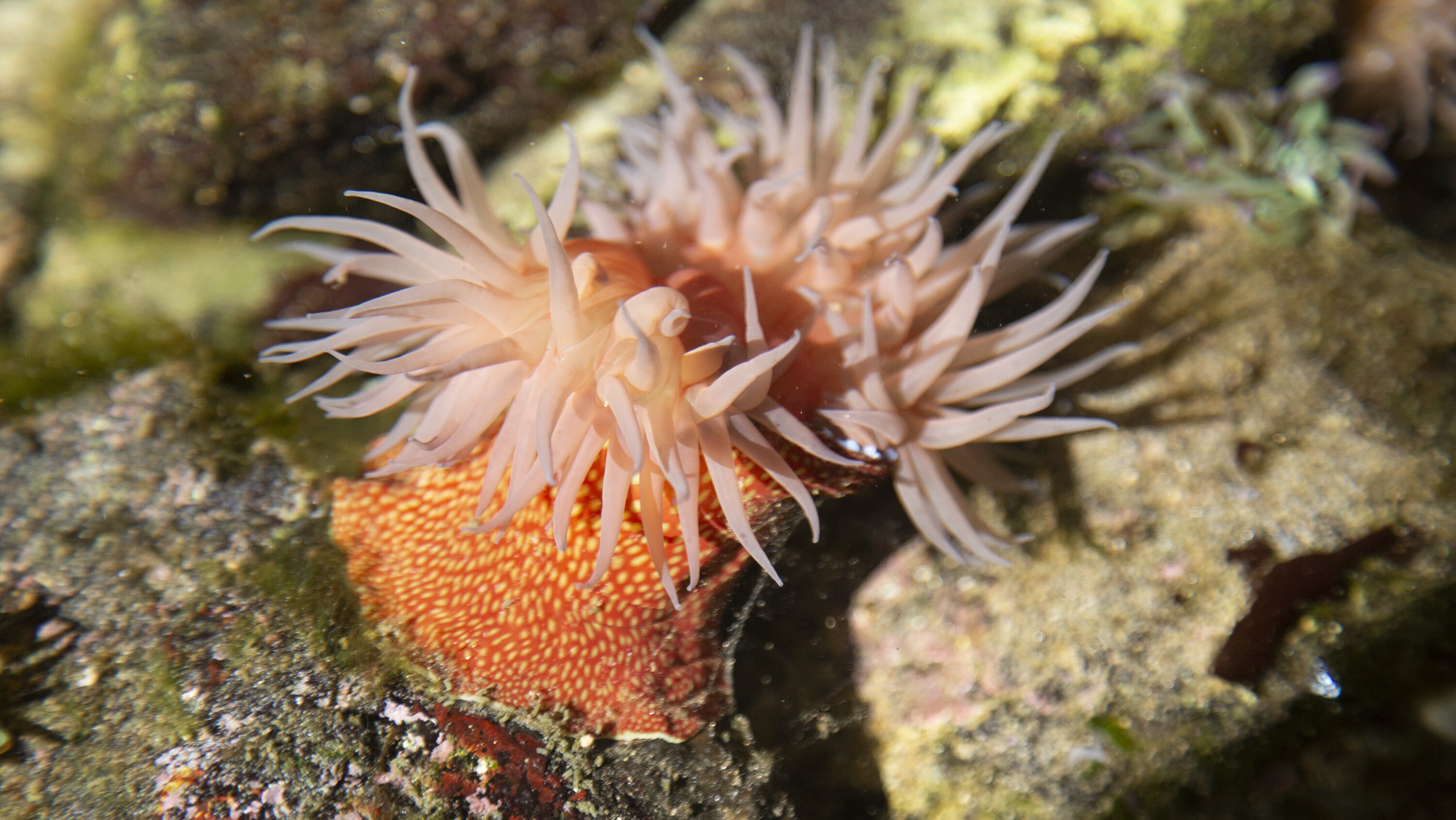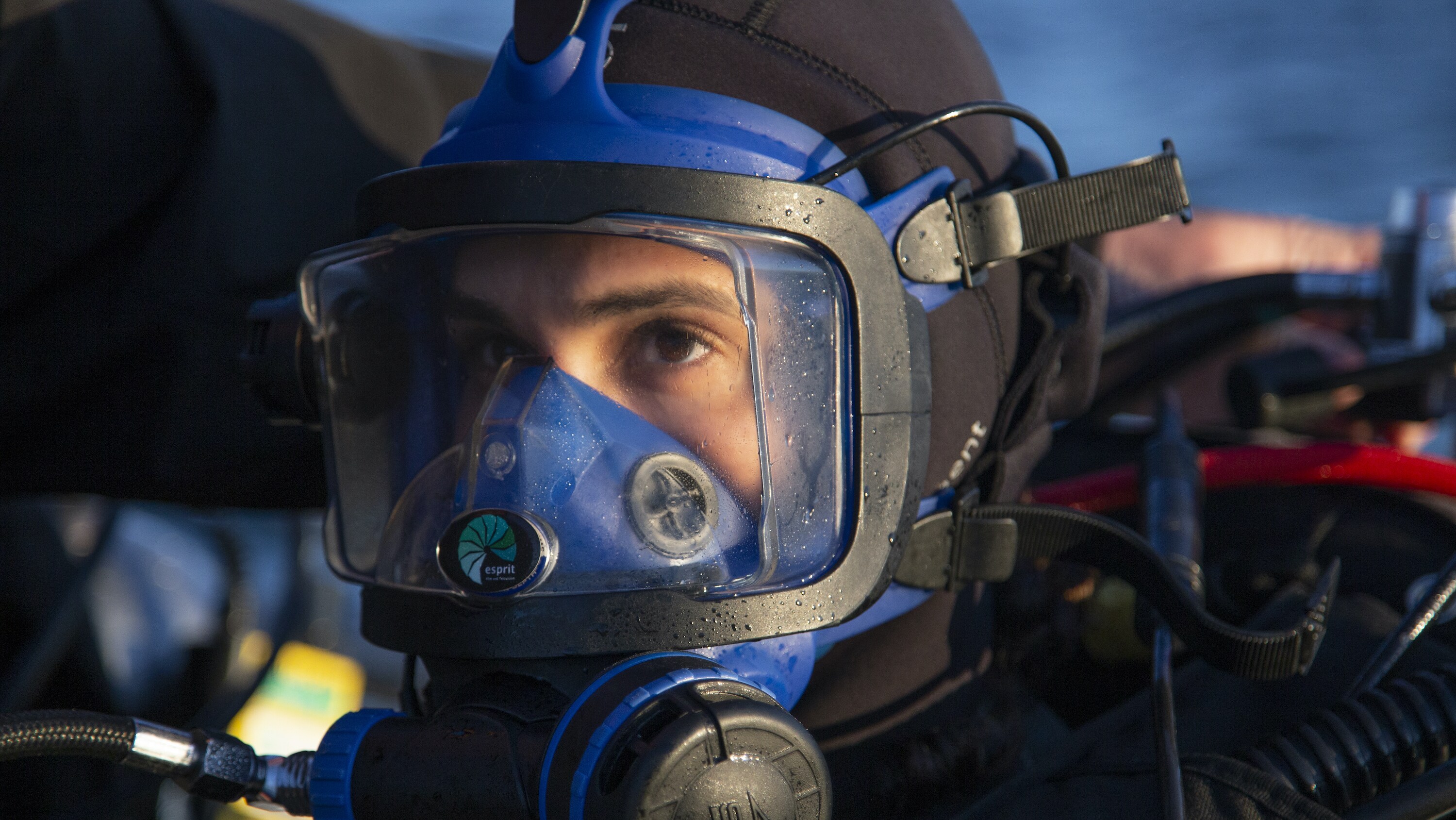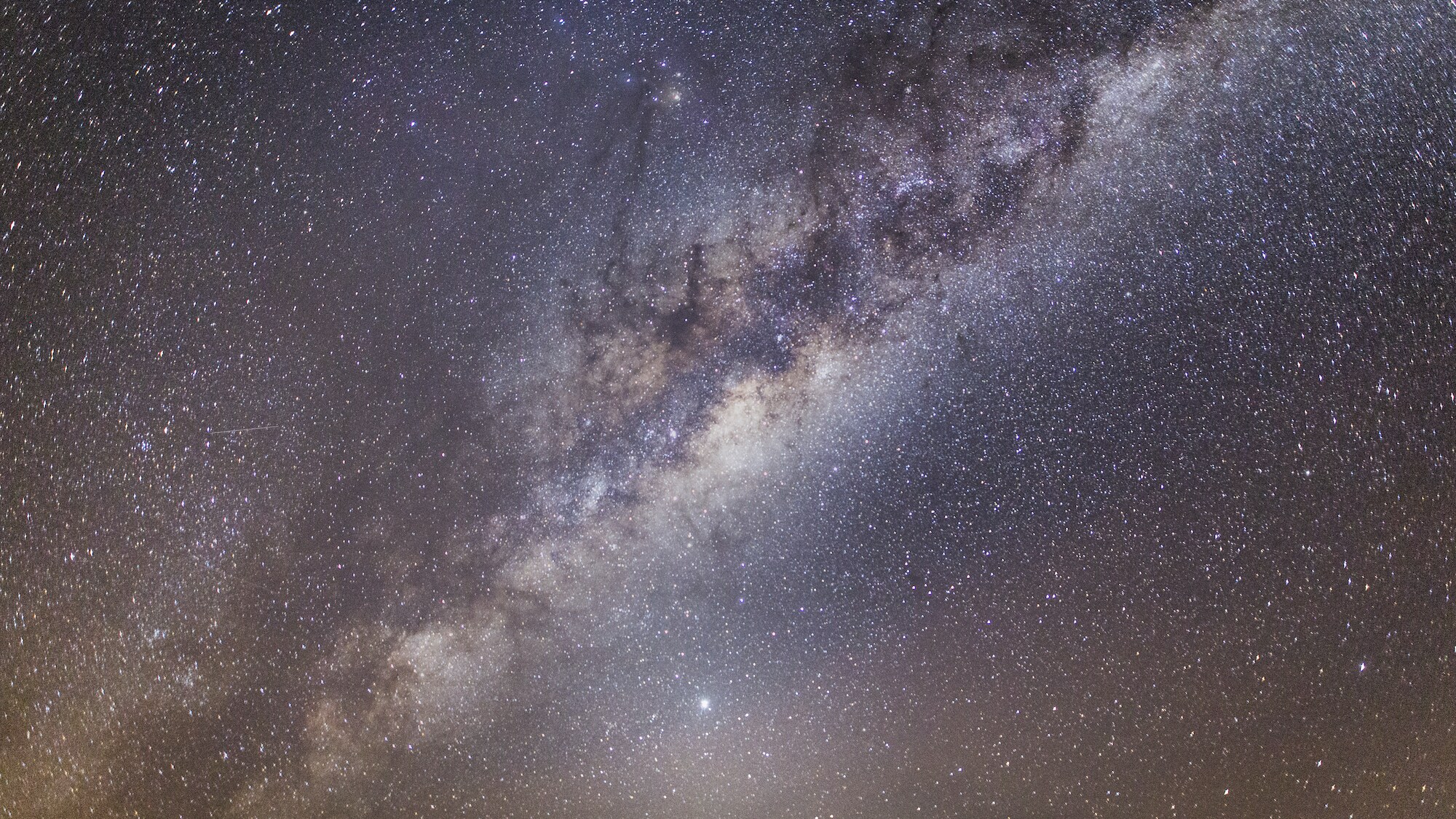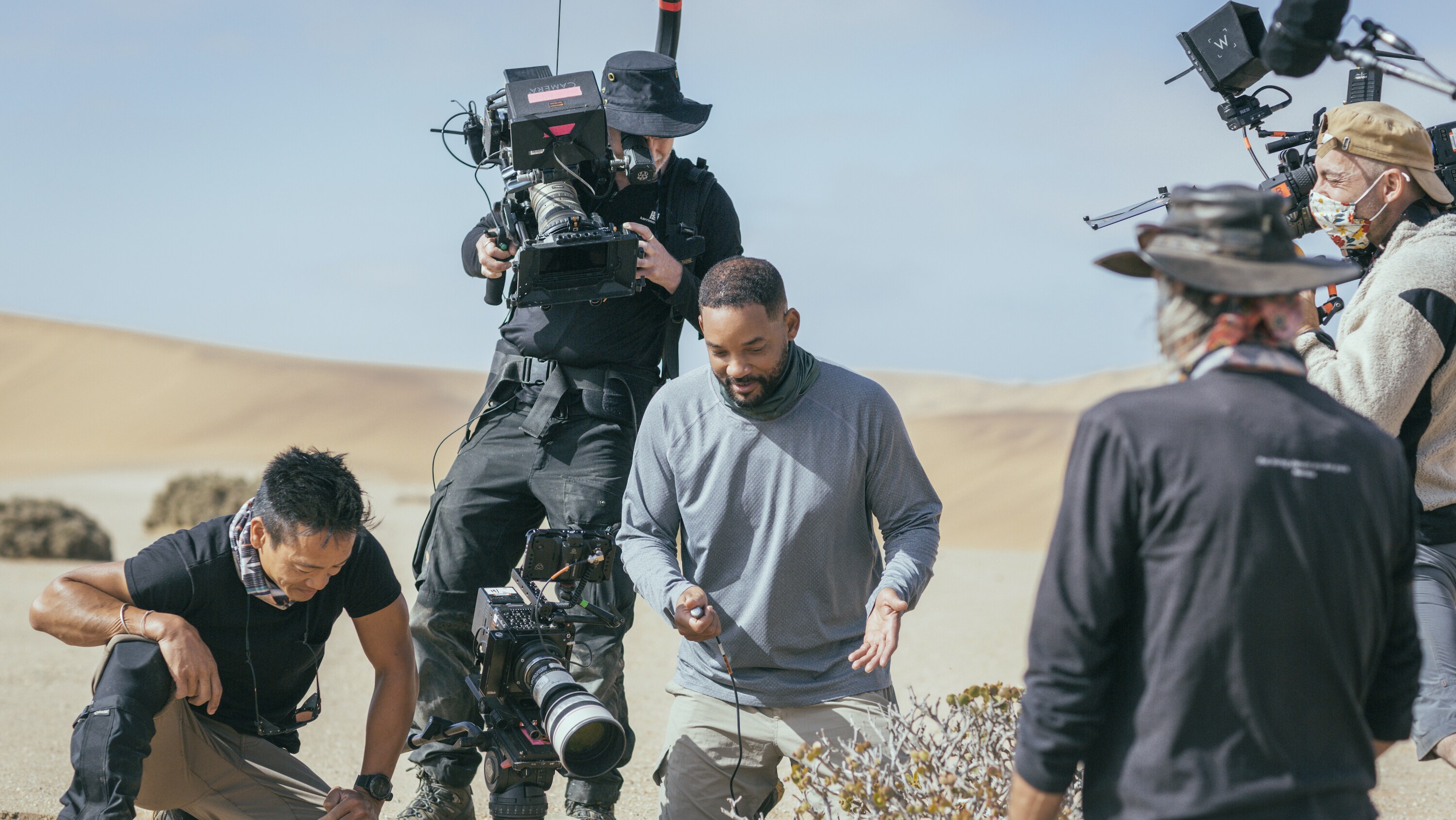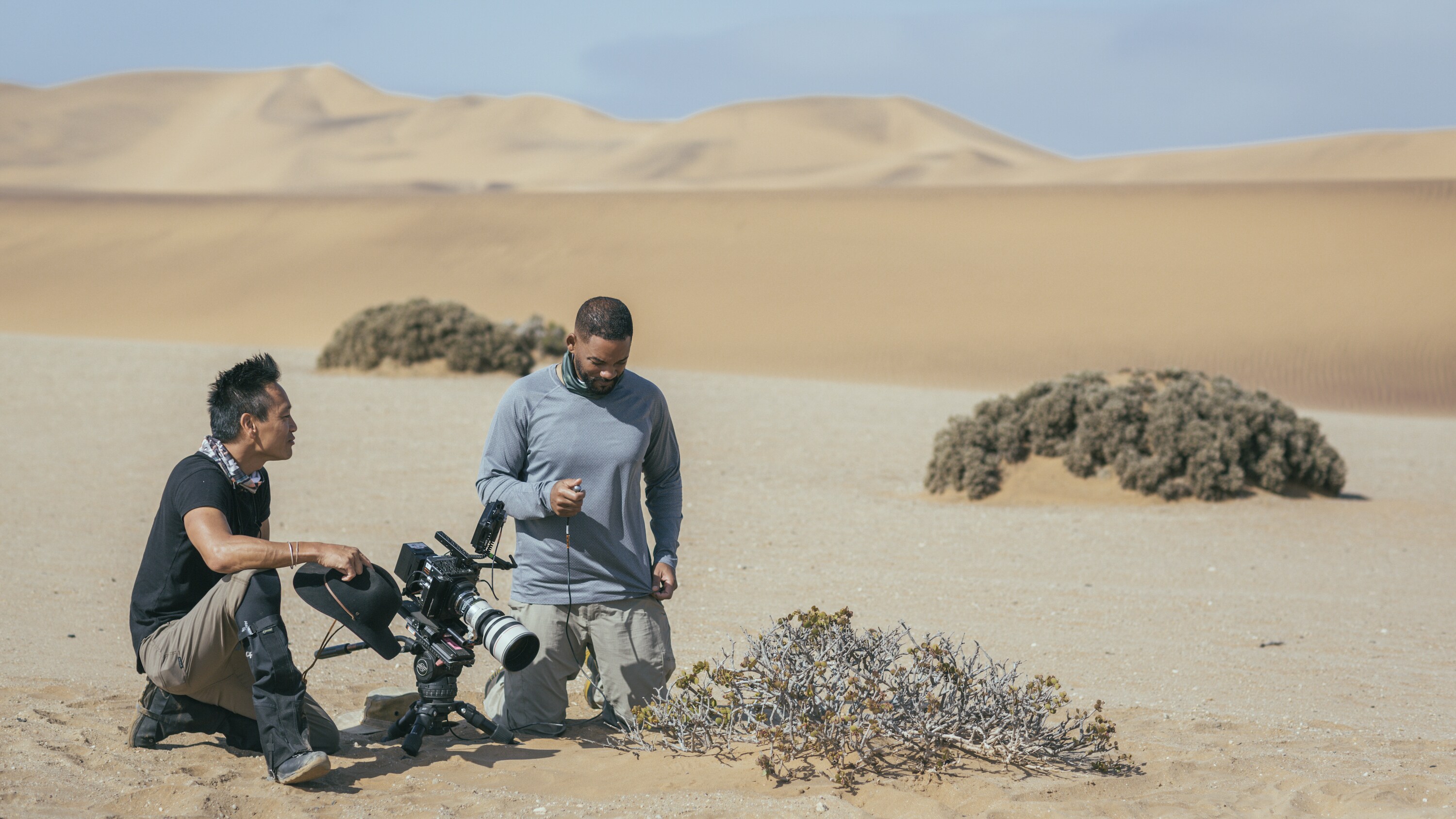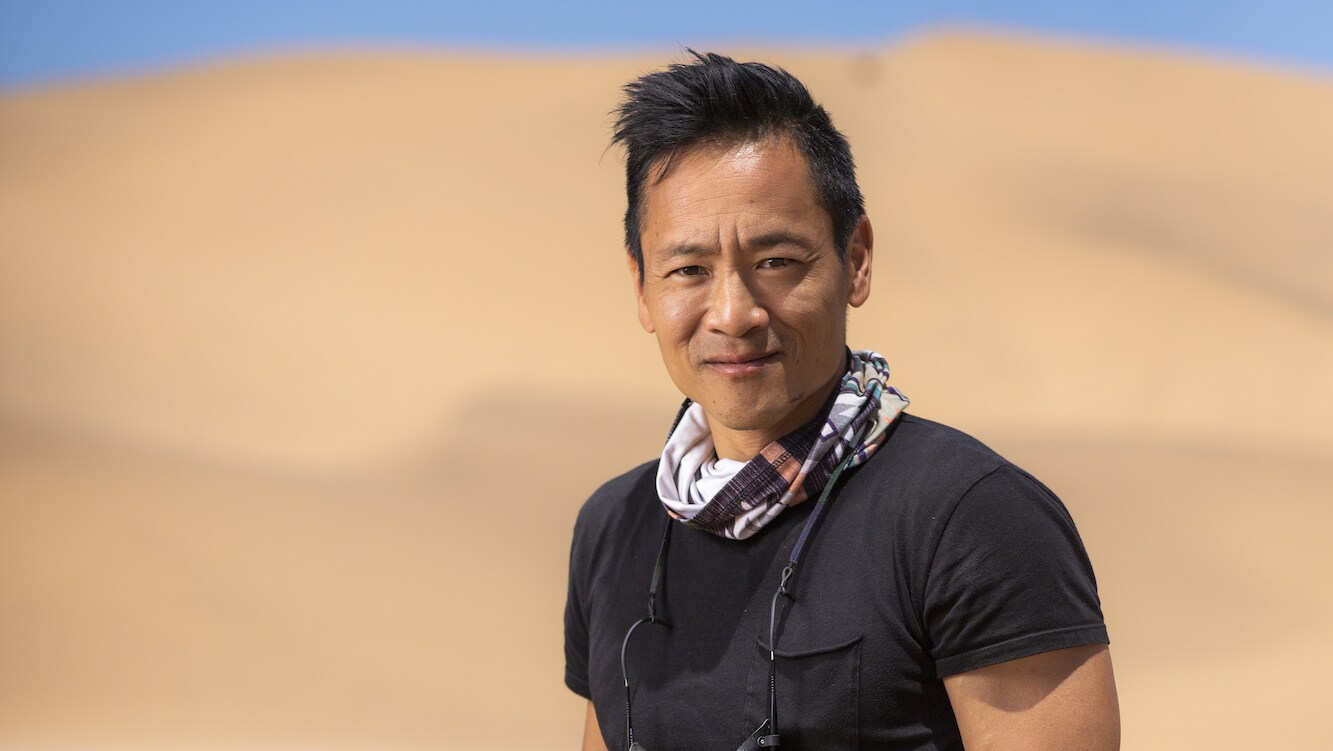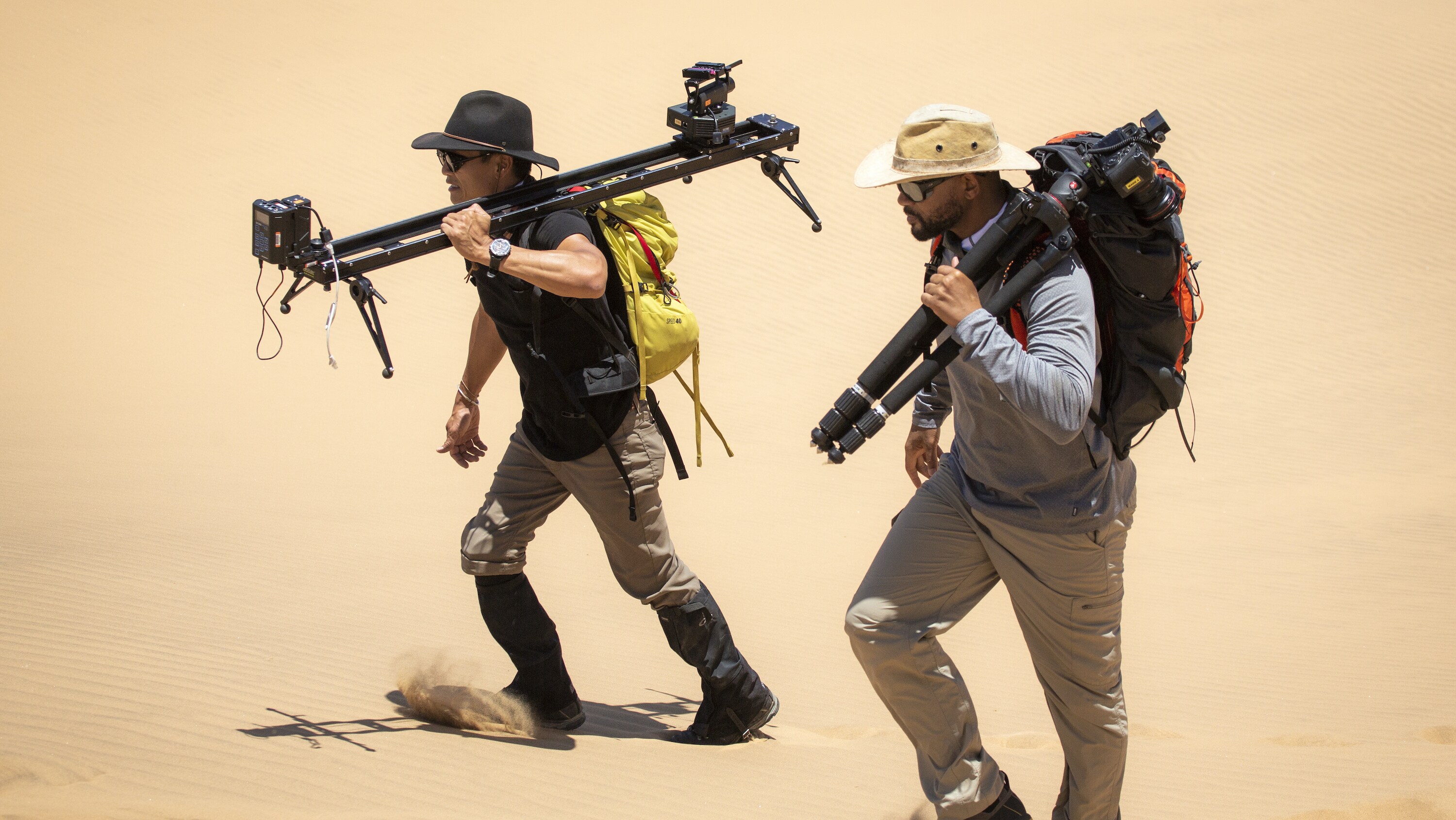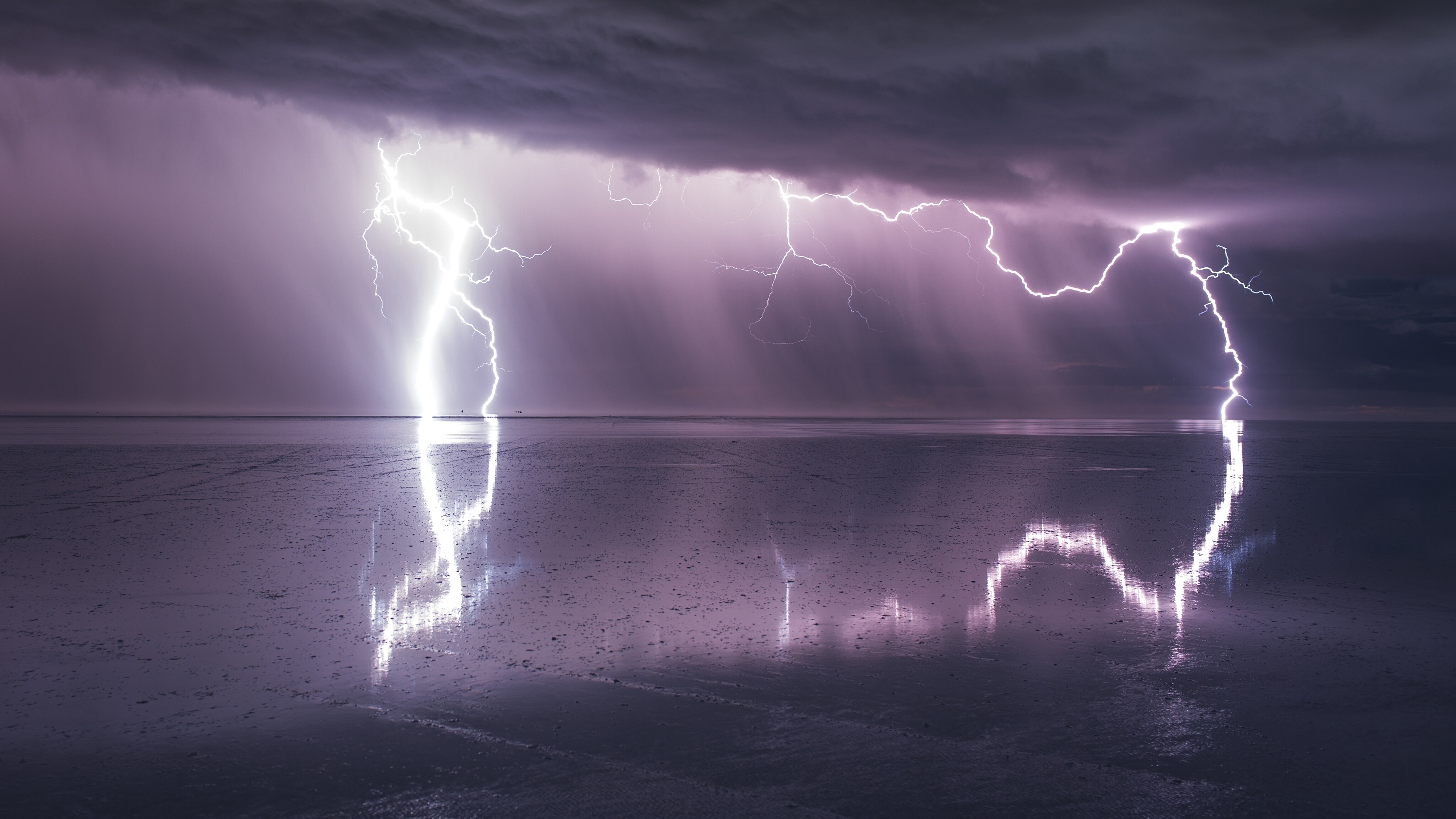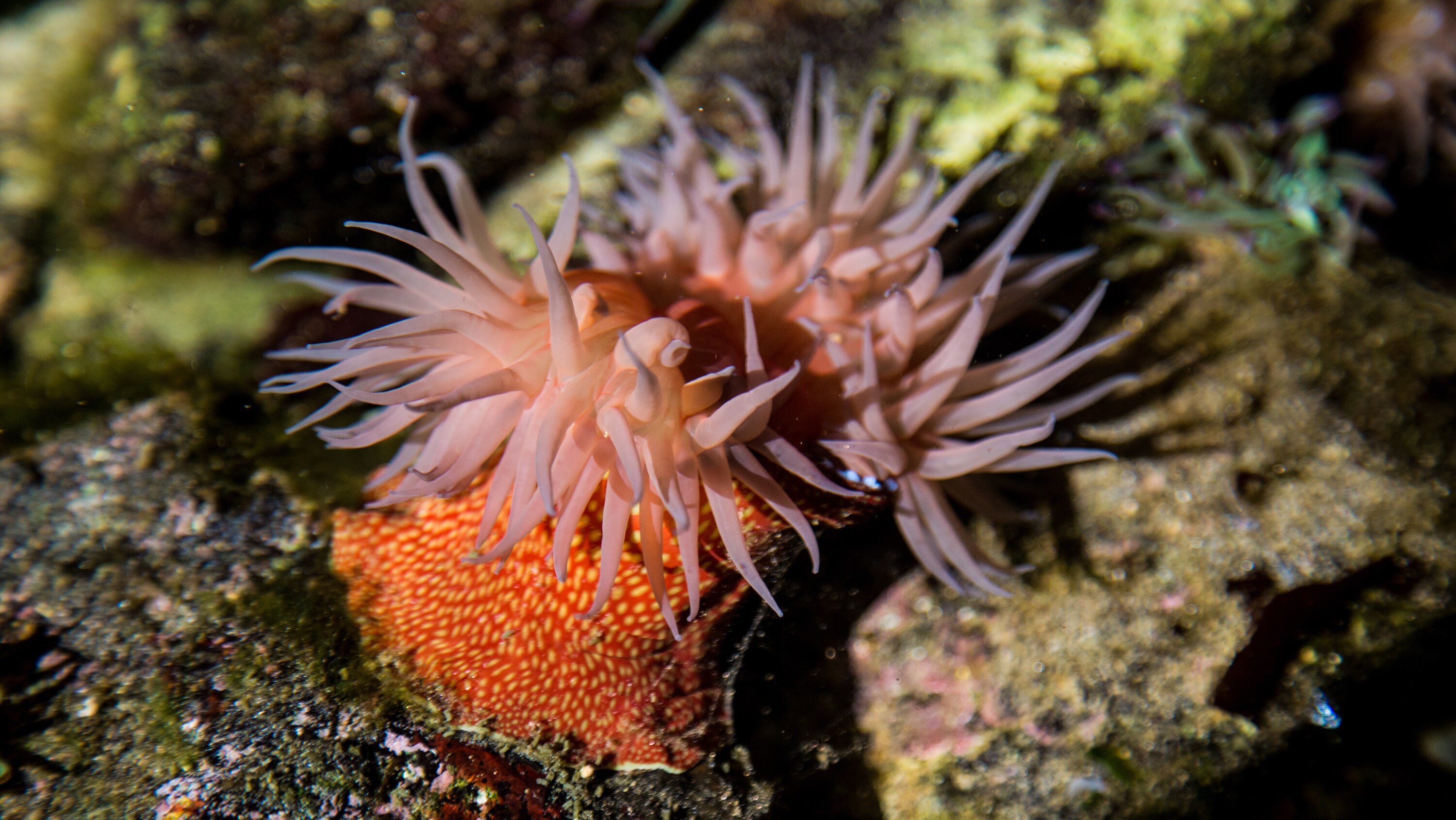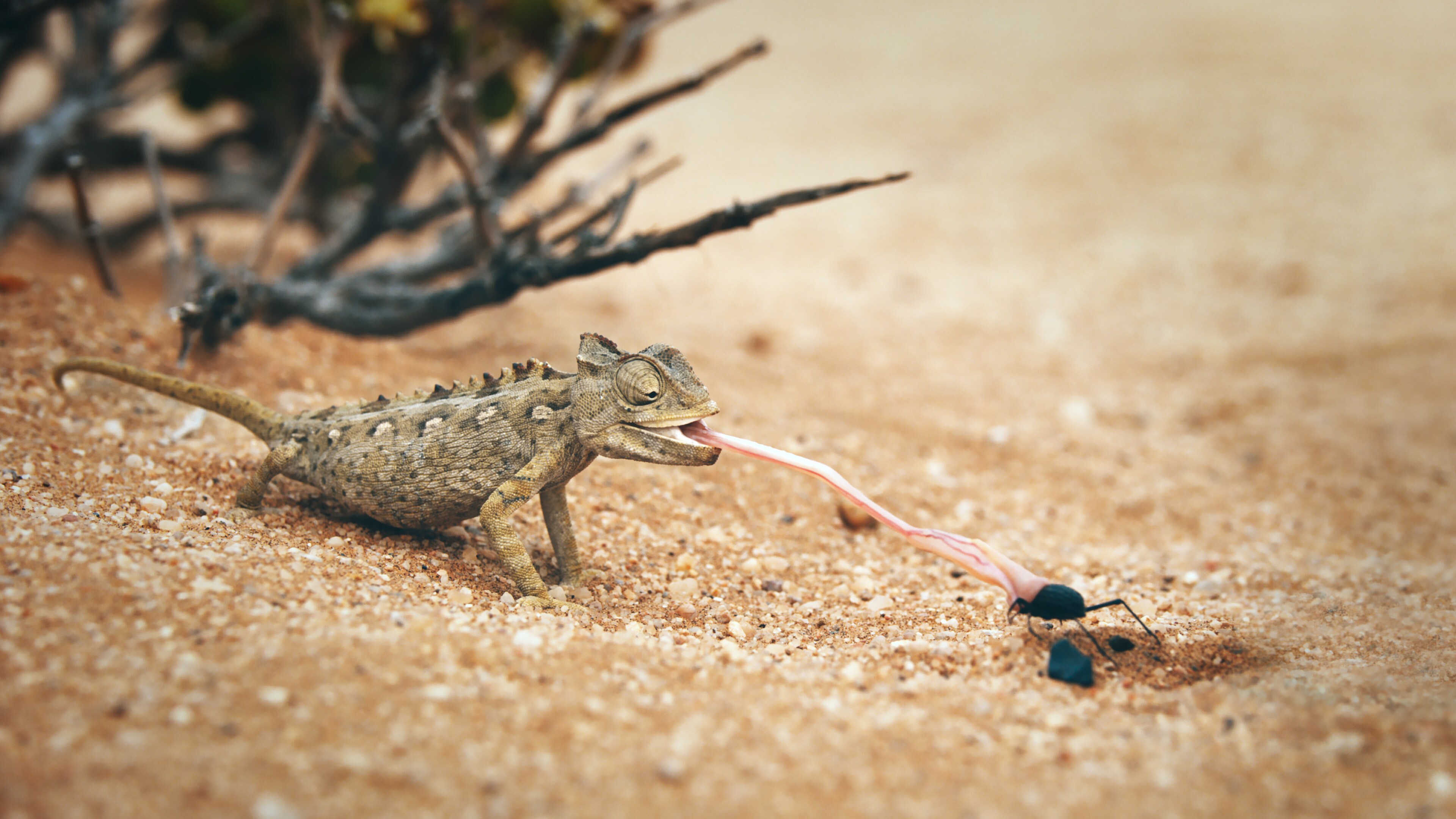Welcome to Earth - "Speed of Life"
Will explores the Namibia Desert, where both the landscape and time seem to have stood still for over 50 million years. Will discovers that humans can only see a small sliver of what’s moving around us because everything on the planet is happening either too fast or too slow for us to perceive. With the help of Albert Lin’s incredible technology, Will finds everything is on the move: life, the earth and even the cosmos.
To download high-res images, click on the image and then use the Download button in the overlay that appears.
Portrait of Explorer Albert Lin in the Namib desert's sea of sand. (National Geographic/Freddie Claire)
Portrait of Explorer Albert Lin in the Namib desert's sea of sand. (National Geographic/Freddie Claire)
Portrait of Explorer Albert Lin in the Namib desert's sea of sand. (National Geographic/Freddie Claire)
ofPortrait of Explorer Albert Lin in the Namib desert's sea of sand. (National Geographic/Freddie Claire)
ofThe milky way reflected in the flood waters of the salar, after seasonal rains transform the salt flats into the largest mirror on the planet. (National Geographic/Freddie Claire)
ofThe milky way reflected in the flood waters of the salar, after seasonal rains transform the salt flats into the largest mirror on the planet. (National Geographic/Freddie Claire)
ofThe milky way reflected in the flood waters of the salar, after seasonal rains transform the salt flats into the largest mirror on the planet. (National Geographic/Freddie Claire)
ofThe milky way reflected in the flood waters of the salar, after seasonal rains transform the salt flats into the largest mirror on the planet. (National Geographic/Freddie Claire)
ofResearcher Kaide MacAulay standing by a timelapse camera. Each February seasonal rains transform the salt flats of Salar de Uyuni into the biggest mirror on the planet. (National Geographic/Freddie Claire)
ofResearcher Kaide MacAulay standing by a timelapse camera. Each February seasonal rains transform the salt flats of Salar de Uyuni into the biggest mirror on the planet. (National Geographic/Freddie Claire)
ofWELCOME TO EARTH production researcher Kaide MacAulay standing by a timelapse camera. Each February seasonal rains transform the salt flats of Salar de Uyuni into the biggest mirror on the planet. (National Geographic/Freddie Claire)
ofWELCOME TO EARTH production researcher Kaide MacAulay standing by a timelapse camera. Each February seasonal rains transform the salt flats of Salar de Uyuni into the biggest mirror on the planet. (National Geographic/Freddie Claire)
ofClouds reflected in the flood waters of Salar de Uyuni, after seasonal rains transform the salt flats into the largest mirror on the planet. (National Geographic/Freddie Claire)
ofClouds reflected in the flood waters of Salar de Uyuni, after seasonal rains transform the salt flats into the largest mirror on the planet. (National Geographic/Freddie Claire)
ofAriel view of the timelapse unit capturing shifting sands in Namibia's sea of sand. (National Geographic/Freddie Claire)
ofAriel view of the timelapse unit capturing shifting sands in Namibia's sea of sand. (National Geographic/Freddie Claire)
ofPortrait of Will Smith, as he prepares to go scuba diving in one of the biggest underground lakes in the world. (National Geographic/Brendan McGinty)
ofPortrait of Will Smith, as he prepares to go scuba diving in one of the biggest underground lakes in the world. (National Geographic/Brendan McGinty)
ofA Strawberry anemone, filmed in timelapse to reveal extraordinary behaviours too slow to see with the naked eye. (National Geographic/Fleur Bone)
ofA Strawberry anemone, filmed in timelapse to reveal extraordinary behaviours too slow to see with the naked eye. (National Geographic/Fleur Bone)
ofPortrait of Explorer Diva Amon as she suits up to dive 25 meters to deploy timelapse cameras to capture anemone behavior in a cold water reef. (National Geographic/Fleur Bone)
ofPortrait of Explorer Diva Amon as she suits up to dive 25 meters to deploy timelapse cameras to capture anemone behavior in a cold water reef. (National Geographic/Fleur Bone)
ofThe galactic core, visible in the summer months of the Southern hemisphere. (National Geographic/Freddie Claire)
ofThe galactic core, visible in the summer months of the Southern hemisphere. (National Geographic/Freddie Claire)
ofCrew member standing under the milky way, as it's reflected in the flood waters of the salar, after seasonal rains transform the salt flats into the largest mirror on the planet. (National Geographic/Freddie Claire)
ofCrew member standing under the milky way, as it's reflected in the flood waters of the salar, after seasonal rains transform the salt flats into the largest mirror on the planet. (National Geographic/Freddie Claire)
ofWill Smith and Explorer Albert Lin attempting to capture the feeding behavior of the Namaqua chameleon, using a slow motion phantom camera. (National Geographic/Freddie Claire)
ofWill Smith and Explorer Albert Lin attempting to capture the feeding behavior of the Namaqua chameleon, using a slow motion phantom camera. (National Geographic/Freddie Claire)
ofWill Smith and Explorer Albert Lin attempting to capture the feeding behavior of the Namaqua chameleon, using a slow motion phantom camera. (National Geographic/Freddie Claire)
ofWill Smith and Explorer Albert Lin attempting to capture the feeding behavior of the Namaqua chameleon, using a slow motion phantom camera. (National Geographic/Freddie Claire)
ofPortrait of Explorer Albert Lin in the Namib desert's sea of sand. (National Geographic/Freddie Claire)
ofPortrait of Explorer Albert Lin in the Namib desert's sea of sand. (National Geographic/Freddie Claire)
ofWill Smith and Explorer Albert Lin collecting Albert's timelapse gear from one of top of one of the highest sand dunes in the world. (National Geographic/Freddie Claire)
ofWill Smith and Explorer Albert Lin collecting Albert's timelapse gear from one of top of one of the highest sand dunes in the world. (National Geographic/Freddie Claire)
ofLightning storm reflected in the flood waters of Salar de Uyuni. Each year seasonal rains transform the salt flats into the largest mirror on the planet. (National Geographic/Freddie Claire)
ofLightning storm reflected in the flood waters of Salar de Uyuni. Each year seasonal rains transform the salt flats into the largest mirror on the planet. (National Geographic/Freddie Claire)
ofA Strawberry anemone, filmed in timelapse to reveal extraordinary behaviours too slow to see with the naked eye. (National Geographic/Fleur Bone)
ofA Strawberry anemone, filmed in timelapse to reveal extraordinary behaviours too slow to see with the naked eye. (National Geographic/Fleur Bone)
ofA chameleon eats a bug in the Namib Desert in Namibia. (National Geographic for Disney+)
ofA chameleon eats a bug in the Namib Desert in Namibia. (National Geographic for Disney+)
of